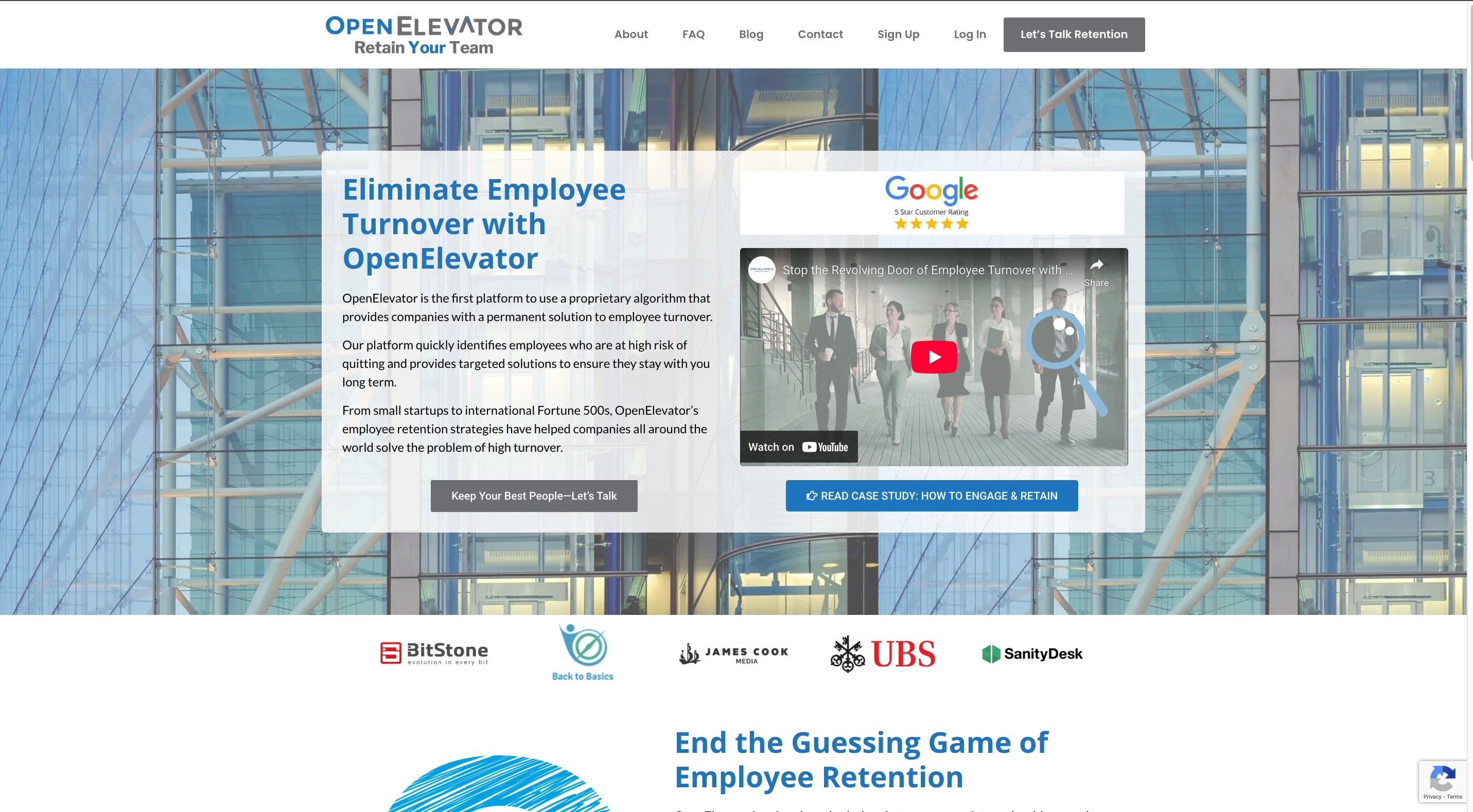More than 60 percent of organizations admit their retention strategies fall short of employee expectations. When skilled professionals leave, companies lose more than talent. They lose momentum and valuable knowledge. Understanding what really drives engagement and building personalized retention plans can make the difference between a revolving door and a thriving, loyal team. This guide reveals practical steps to uncover what matters most to your people, spot hidden retention risks, and create lasting impact.
Table of Contents
- Step 1: Assess Existing Engagement Drivers Effectively
- Step 2: Diagnose Retention Gaps With Actionable Data
- Step 3: Implement Targeted Recognition And Growth Plans
- Step 4: Align Retention Tactics With Employee Values
- Step 5: Measure Impact And Adjust Retention Strategies
Quick Summary
| Key Point | Explanation |
|---|---|
| 1. Create a comprehensive engagement assessment | Use targeted surveys to assess organizational and individual engagement drivers for authentic feedback. |
| 2. Analyze multiple data sources | Combine various assessment methods to identify patterns and potential retention risks effectively. |
| 3. Implement personalized recognition strategies | Design tailored growth plans and feedback mechanisms that align with individual employee motivations and career goals. |
| 4. Foster genuine employee value alignment | Conduct deep listening sessions to align retention strategies with employees’ core values and aspirations. |
| 5. Measure impact with a feedback loop | Continuously evaluate retention strategies through surveys and conversations to adapt to workforce needs dynamically. |
Step 1: Assess existing engagement drivers effectively
Understanding your team’s engagement isn’t about complex spreadsheets or fancy metrics. It’s about listening strategically. According to research from NIST, organizations like the Illinois Municipal Retirement Fund have developed sophisticated yet practical approaches to measuring workforce engagement through targeted surveys.
Start by creating a comprehensive assessment framework that captures both organizational and individual perspectives. The Vanderbilt University Manager’s Toolbox recommends identifying key engagement drivers such as career development, job content, recognition, manager relationships, and organizational vision alignment. Create a survey or assessment tool that allows employees to rank these drivers transparently. Use a mix of quantitative rating scales and open ended qualitative questions to capture nuanced insights.
Warning: Avoid turning this into a bureaucratic exercise. The goal is genuine understanding, not checking administrative boxes. Your assessment should feel like a conversation, not an interrogation. Employees will provide more honest feedback when they sense authentic interest in their experience.
The next step involves analyzing these results and identifying specific patterns and actionable insights that can guide your engagement strategy.
Step 2: Diagnose retention gaps with actionable data
Diagnosing retention gaps requires a strategic approach that transforms raw data into meaningful insights. According to Best HR Certification, successful organizations leverage multiple assessment methods to understand workforce dynamics comprehensively.
Begin by triangulating data from different sources. This means combining annual surveys, pulse check surveys, management reports, and observational assessments to create a holistic picture of your team’s engagement landscape. Look for patterns in areas like performance metrics, turnover rates, internal mobility, and employee feedback. Pay special attention to teams or departments showing consistent performance drops or higher than average turnover rates. These are your early warning signals.
Warning: Data without context is just noise. Don’t get lost in spreadsheets. Each data point represents a human experience. Contextualize your findings by connecting quantitative metrics with qualitative insights. Ask yourself what the numbers are really telling you about your team’s underlying motivations, challenges, and potential retention risks.
The next step involves transforming these diagnostic insights into targeted intervention strategies that address specific retention challenges.
Step 3: Implement targeted recognition and growth plans
Creating meaningful growth and recognition plans goes far beyond standard annual performance reviews. According to research from Outsource to Vietnam, successful organizations leverage comprehensive performance management strategies that recognize superior performance through multiple channels including praise, salary increases, and strategic promotions.
Design a 360-degree feedback mechanism that provides holistic insights into employee performance. As recommended by AJPO Journals, this approach integrates evaluations from managers, peers, subordinates, and clients to create a well rounded view of an employee’s strengths and development opportunities. Develop personalized growth plans that align individual career aspirations with organizational objectives. This means moving beyond generic training programs to create tailored development roadmaps that speak directly to each team member’s unique potential and professional goals.
Warning: Recognition is not a one size fits all strategy. What motivates one employee might feel meaningless to another. Take time to understand individual preferences listen actively and customize your approach. Some team members might value public acknowledgment while others prefer private appreciation or specific professional development opportunities.
The next step involves creating a sustainable feedback and growth ecosystem that continuously supports your team’s professional evolution.
Step 4: Align retention tactics with employee values
Retention is not about keeping people in seats but creating an environment where talented professionals feel genuinely valued and aligned with organizational purpose. Research from NCBI demonstrates that organizational performance dramatically improves when retention strategies authentically connect with employee core values and engagement drivers.
Start by conducting deep listening sessions that go beyond surface level conversations. Use structured yet empathetic dialogue to uncover what truly motivates your team members. According to PMC, understanding the underlying behavioral drivers can transform how you design retention strategies. This means moving past generic perks and creating personalized approaches that speak directly to individual professional aspirations. Consider creating individual value maps that capture each team member’s unique motivational landscape including their career goals, personal development needs, and deeper purpose beyond monetary compensation.
Warning: Authenticity is critical. Employees can quickly detect performative efforts that lack genuine commitment. Your alignment strategy must be a living process not a one time exercise. It requires consistent reflection ongoing dialogue and a willingness to adapt as your team’s needs evolve.
The next step involves translating these insights into actionable retention strategies that feel meaningful and personal to each team member.
Step 5: Measure impact and adjust retention strategies
Successful retention strategies demand more than good intentions they require rigorous measurement and continuous refinement. According to Kesem, thoughtful survey design is critical for collecting meaningful feedback that helps organizations identify trends and make data-driven decisions about workplace culture.
Develop a comprehensive measurement approach that combines quantitative surveys with qualitative insights. As recommended by IJRAR, this means creating customized surveys that reflect your organization’s unique strategy and values. Use a mix of standardized engagement metrics and organization specific questions that capture nuanced aspects of employee experience. Track key indicators like retention rates, employee satisfaction scores, internal mobility percentages, and qualitative feedback from exit interviews and ongoing pulse surveys.
But numbers tell only part of the story. Complement statistical data with focus groups and one-on-one conversations that provide deeper context and uncover underlying motivations behind potential retention challenges.
Warning: Measurement is not a passive exercise. Avoid the trap of collecting data without a clear plan for action. Each survey and feedback mechanism should directly connect to potential intervention strategies. Be prepared to communicate transparently about survey results and demonstrate tangible steps taken in response to employee insights.
The final step involves creating a continuous improvement cycle that keeps your retention strategy dynamic and responsive to evolving workforce needs.
Unlock Lasting Talent Retention with Proven Solutions
The challenge of employee turnover is real and urgent. This article highlights the pain points you face like identifying retention gaps, aligning strategies with employee values, and implementing targeted recognition plans. If you want to turn these insights into action and stop losing your best talent, you need a powerful tool designed to detect risks early and tailor proven interventions. OpenElevator uses a unique algorithm to pinpoint employees at high risk of quitting and delivers customized retention strategies that work for every team.
Don’t let guesswork or delayed reactions damage your workforce morale and stability. Explore how OpenElevator’s platform transforms raw engagement data into actionable growth plans. Deepen your retention approach by leveraging tools that assess your team’s true drivers and monitor progress continuously. Ready to reduce turnover and build a thriving workplace culture? Visit OpenElevator now and start securing your company’s future today.
Frequently Asked Questions
What are the first steps to assess employee engagement as part of a talent retention strategy?
Begin by creating a comprehensive assessment framework that captures both organizational and individual perspectives. Design a survey combining quantitative rating scales and open-ended questions to gather honest feedback from employees about key engagement drivers.
How can I diagnose retention gaps effectively within my organization?
Diagnose retention gaps by triangulating data from multiple sources such as annual surveys and performance metrics. Look for patterns that indicate areas of concern, focusing on teams with high turnover rates or performance drops to identify specific issues.
What should I include in a targeted recognition and growth plan for employees?
Develop a 360-degree feedback mechanism that integrates evaluations from managers, peers, clients, and subordinates. Create personalized growth plans to align individual career aspirations with organizational goals, ensuring that recognition methods are tailored to each employee’s preferences.
How do I align retention tactics with my employees’ core values?
Conduct deep listening sessions to uncover what truly motivates your team members, moving beyond generic perks. Create individual value maps to understand each employee’s career goals and personal development needs, ensuring that your retention strategies resonate with their aspirations.
What is the best way to measure the impact of my retention strategies?
Use a combination of quantitative surveys and qualitative insights to develop a comprehensive measurement approach. Track key indicators such as retention rates and employee satisfaction scores, and hold follow-up one-on-one conversations to gain deeper insights into employee experiences and motivations.
How can I continuously improve my talent retention strategy?
Establish a continuous improvement cycle by regularly analyzing feedback and measurement data. Be prepared to adjust your retention strategies based on evolving workforce needs, ensuring that you communicate results and actions transparently to your teams.


